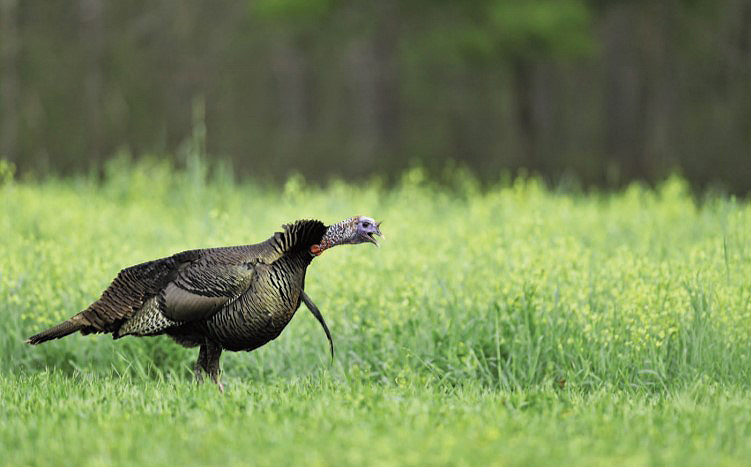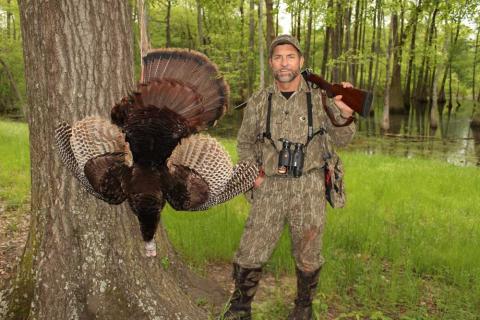Ronnie “Cuz” Strickland

Tip 1: Approaching the roost
Deciding how close to get to a roosted gobbler at daybreak is one of the most important decisions any turkey hunter has to make but distance is only one factor to think about.
When moving in to set up on a gobbler that has sounded off, the chances of other turkeys roosting nearby is high. Pick your path carefully and move slowly and avoid anything that will make noise. One step at a time, heel first so you can feel what’s under your feet. Have a call handy so if you do spook another turkey that flies from the trees, you can cackle in an attempt to maybe fool the gobbler into thinking a turkey just flew down naturally and was not spooked. Always err on the side of setting up too far from the gobbler; you can always move again if the gobbler does not come in to your setup at first light. The key to getting the right setup on a roosted gobbler is knowing your hunting ground, so let your feet do the work, scout early and often.
Tip 2: Hide in plain sight
Back in the day, most turkey hunters built makeshift blinds to hide from turkeys but with today’s equipment and Mossy Oak camouflage, a good setup is as close as you need it. With a little attention to detail you can setup almost any place and fool a gobbler. Purchase your Mossy Oak pants a few inches longer than normal to make sure they cover any exposed area above your boots. Try and set up in the shade, and check to see which way the sun is moving in case you’re there for a long period of time. Always carry a pair of ratchet clippers to remove any brush or limbs that are in your shooting lane, you can also clip nearby vegetation to add more cover to your setup.
Make sure everything is covered - hands, face, gun - and there is nothing on or around you that might shine. Be careful where you set things down as well - a water bottle, a bright-colored call - anything out of place can spoil your setup. Once you’ve picked your spot to set up, make sure you’re comfortable, have a good cushion and plenty of patience and that may be all you need then to close the deal.
Tip 3: Listen to the Hens
Not every call you throw our there is going to provoke a gobbler to sound off, but sometimes it doesn’t have to. It’s no big secret that the hens, not the gobblers, make most of the decisions in the turkey woods. If you encounter a strutting gobbler with hens and he is not paying you or your calls any attention, listen to see if any of the hens are answering. Oftentimes, the lead or boss hen may get annoyed with aggressive hens off in the distance. Some hens are protective or territorial and may not tolerate outside interference with their routine. If a hen answers your calling, call back, try and mimic her as close as possible and see if she gets more excited. Call every time she does without increasing your volume and see if she moves closer. She may lead the flock in your direction. Face it, if a gobbler has hens with him and is paying you no attention, you might as well try and get the hens fired up; yelps are free and in that situation you don’t have much to lose.



























